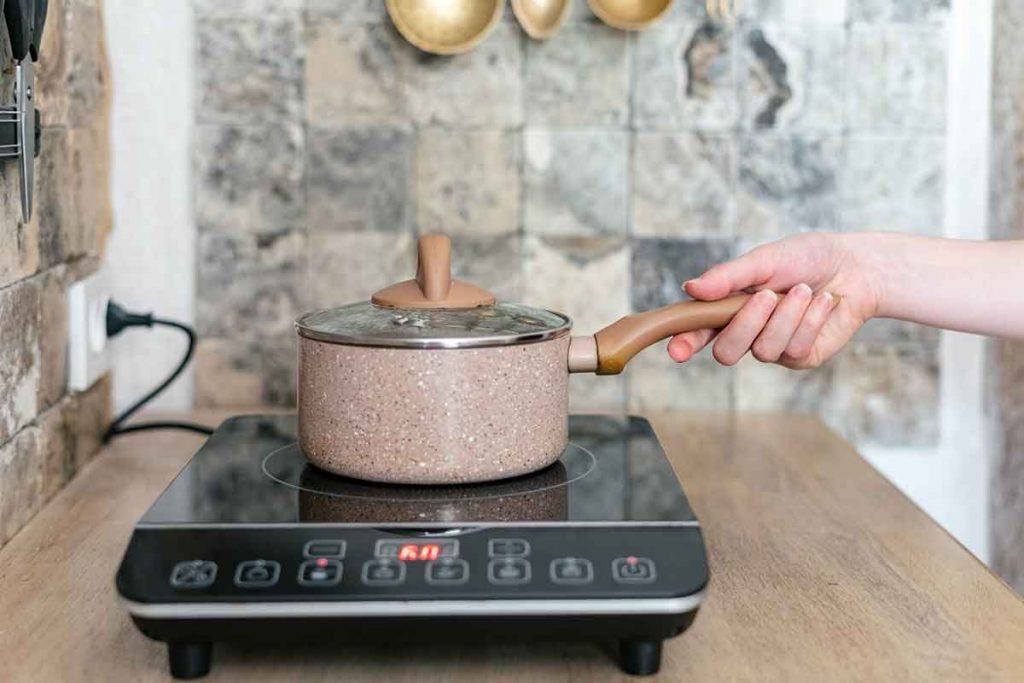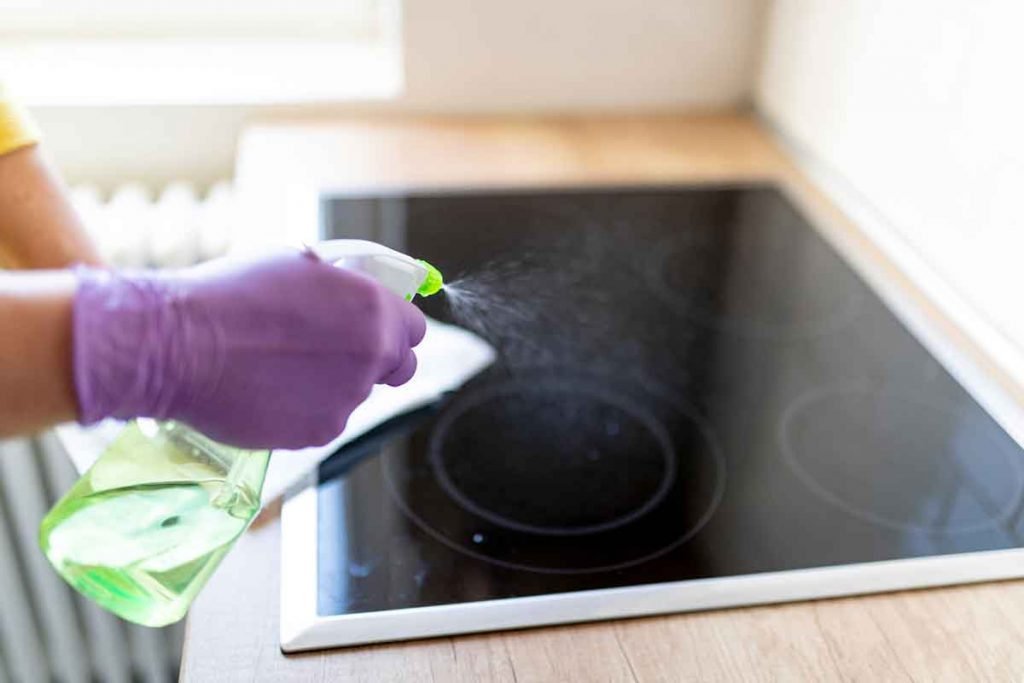Induction cooktops have been celebrated for fast heating and articulate temperature settings. The units’ energy-efficient function leaves very little heat lost to the surrounding, as a huge percentage of heat goes into cooking. As a result, food cooks well and quickly. But how advanced is the heat control? Can you slow cook on an induction cooktop?
Is It Possible to Slow Cook on an Induction Cooktop?
Yes, you can indeed slow cook with your induction cooktop. This is a common interesting question potential customers ask before buying induction cooktops. These cooktops allow precise temperature control and are ideal for slow and fast cooking. Besides, induction cooktops can maintain a low yet consistent heat over a long time.
This is ideal for recipes that need gentle simmering to preserve the color, flavor, and tenderness over several hours. However, you must invest in quality compatible cookware made of magnetic materials such as stainless steel or cast iron.
Non-magnetic copper, glass, or aluminum cookware does not work on induction cooktops. Remember to use the appropriate low heat setting and adjust the heat and the cooking time when necessary. So, with the right setting and quality cookware, you can enjoy slow-cooking recipes on induction cooktops.
How Do You Slow Cook on an Induction Stove?
Slow cooking offers great convenience. One of the remarkable benefits of slow cooking is that all the flavors penetrate the dish. This method also allows you to prepare nutritious meals with minimum effort.
Here are the steps you need to follow to slow cook on an induction unit successfully.
1. Choose a Recipe that is Ideal for Slow Cooking
As discussed, slow cooking is all about precise cooking at a certain cooking temperature and time. Not all recipes are ideal for this. Therefore, you should choose a recipe that works well with the cooking method, such as meat and soup.
2. Choose the Right Cooking Pot or Sauce
Not all pots can work with the induction cooktop. These units require special induction-ready pans and sauces. It is advisable to use a heavy-bottomed induction-compatible pot when slow cooking for even distribution of heat. Your pot should also be large, with handles and a lid.
3. Set Your Heat and Cooking Time Correctly
All you need for slow cooking is to set your temperature and time correctly. Luckily, most Induction cooktops come pre-programmed with slow cooking settings. They can maintain a specific temperature for an extended period (6-8 hours).
4. Ensure You add Adequate Liquid to Your Food
Slow cooking is associated with less evaporation. This means that you do not need to flood your meal with liquid. Well, unless you are making soup. However, the quantity of your liquid is, to an extent, dependent on your cooking temperature and time. Food cooked for a short time or at a higher temperature needs more liquid than those cooked at a low temperature or longer.
5. Do not Leave the Food Unattended
Remember, the leading cause of kitchen accidents is unattended food. This is in addition to forgetting to turn off the induction unit after removing the cooking pan. Other leading causes of kitchen accidents are placing kitchen towels and potholders too close to the heating element and miscalculating the cooking time and heat. You should be keen when cooking. Be sure to check on your meal consistently.
Cooking at the right temperature removes bad cholesterol and cuts down unwanted calories.
Can You Simmer on an Induction Hob?
Yes. Similar to gas stoves, induction hobs can be easily controlled and set to different cooking levels. Simmer is one of the controlled cooking levels you can achieve on an induction cooktop.
What is Simmer on Induction?
Simmering heat refers to the ideal temperature for boiling vegetables. The perfect simmering heat is about 73°C. This temperature is hot enough to break the vegetable cells but slightly lower than the water’s boiling point. To settle on the perfect simmering point, you will adjust the temperature level until the water in which the vegetable is put in bubbles gently.
The trick to delicate, nutritious, and highly flavored vegetables is to cook them slowly at their ideal temperature. This will not only retain vitamins but also leave the meal healthy and tasting good. Bon appétit!
What is Low Heat on Induction?
Uneven temperatures can often get food over or undercooked. Luckily, this is not a problem when using an induction cooktop. Induction units have specific temperature ranges which fall between 37°C and 260°C. The 37°C represents the low, while 260°C represents the highest induction temperature.
The low heat on an induction cooktop ranges from 37°C (100°F) to 65°C (150°F). This temperature setting is ideal for:
- Melting foods such as frozen food and chocolate
- Heating cooking oil
- Steaming vegetables
- Slow cooking
- Keeping food warm
- Making delicate sauces and soups
A Useful Guide on How to Use an Induction Cooktop
Induction cooking is a novel and healthy way of preparing food. This method of cooking is economical, safe, and very exciting. All you have to do is to master a few tricks, and you are good to go!
- Maintain your induction temperatures evenly. Induction cooktops heat up so quickly, that one can accidentally overcook or burn even a familiar dish. It is advisable to frequently watch the clock and cook your meal on a lower temperature setting
- Clean up your induction cooktop every time after use. This ensures there are no spills, grease, or dirt piles up on your cooktop. You can always put some of your favorite detergents in a spray bottle and wipe the cooktop with a soft towel.
- Always use the right cookware. The only suitable cookware for induction cooktops is made from ferrous metals, such as cast iron and certain stainless. Your cookware should be smooth and flat-bottomed. Avoid Copper, Aluminum, and Glass cookware as they are ineffective and are likely to leave marks on your cooktop.
- Find the right spot to keep all your magnetic items safe. Any interaction between magnetic objects and the induction unit would interfere with the magnetic field in the unit and cause adverse damages
Additional Questions
Here’s a sample of questions and answers related to slow cooking on an induction cooktop.
1. What is Medium Heat on an Induction Stove?
Medium heat is the temperature range between 79°C and 205°C. This temperature range is ideal for cooking different dishes. Just like Low, this temperature range is divided into Medium-low, Medium, and Medium-high.
- Medium-low: This temperature range starts from 79°C to 121°C. The heat in this section is ideal for preparing chicken stocks, sauces, and soups.
- Medium: Medium heat ranges between 135-163°C. This temperature setting is suitable for cooking eggs and roasting chicken. You can quickly cook noodles and pasta very at a temperature of between 157°C and 163°C
- Medium-high: The heat in this option is perfect for caramelized dishes, making pancakes, potatoes, and crispy chicken.
How Many Watts Does an Induction Cooktop Use?
The best wattage for cooking in an Induction Cooktop is 2000 watts. This wattage is suitable for a wide variety of dishes. Fortunately, you can adjust it to different wattages depending on the meal you are cooking, and its cooking requirements. The higher the wattage, the lower the cooking time and the lesser the electricity consumption.
Although induction cooktops are precise in heat distribution, it is important to choose your cooking temperature keenly. High temperatures may burn the food or cause it to lose flavor, while setting the temperature too low may result in the food taking too long before cooking.
Luckily, an induction cooktop can continuously change the cooking temperature. The surest way to enjoy using your induction cooktop unit is to use the adjustable temperature setting on your induction cooktop. Happy Cooking!



